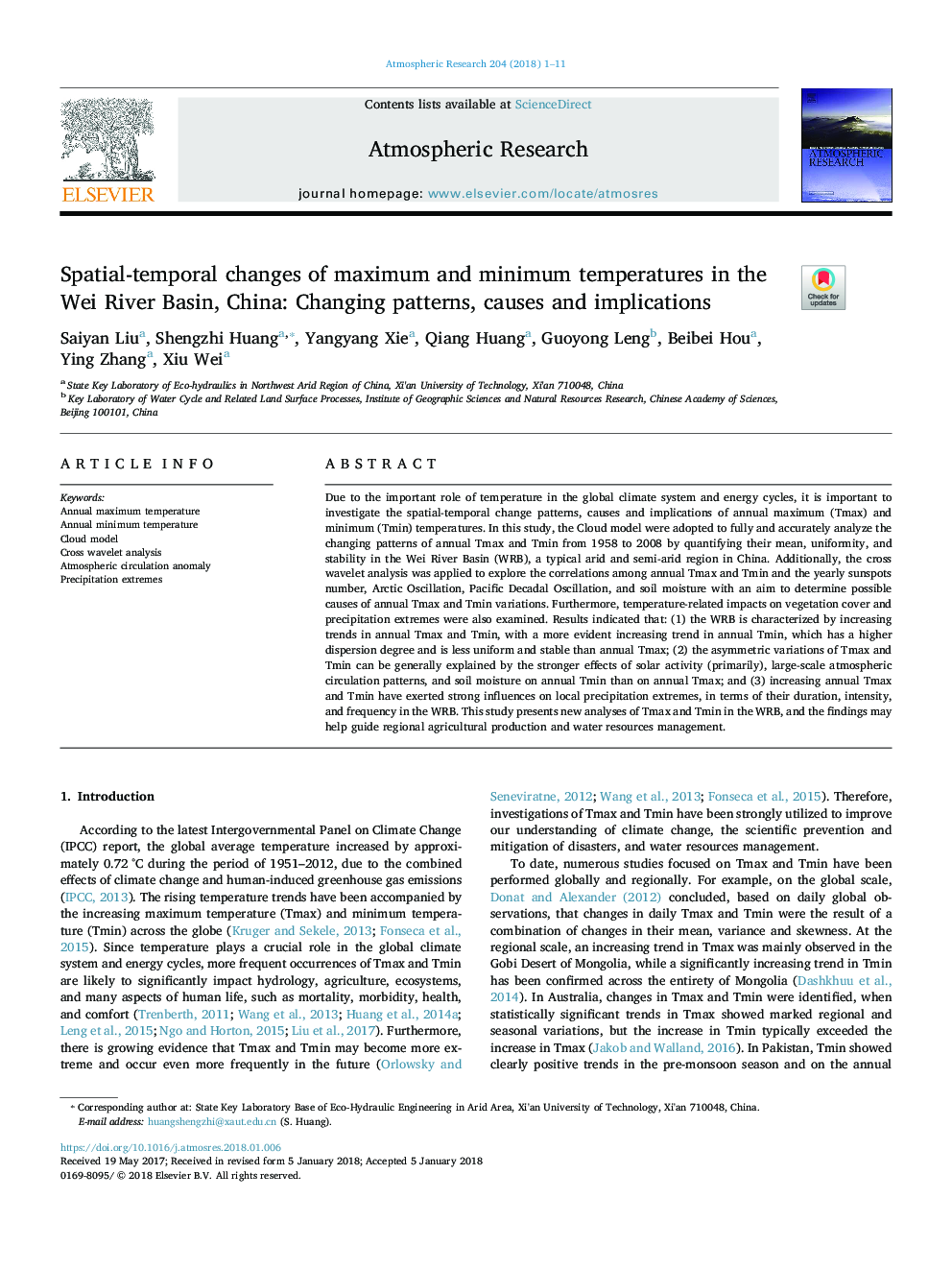| Article ID | Journal | Published Year | Pages | File Type |
|---|---|---|---|---|
| 8864717 | Atmospheric Research | 2018 | 11 Pages |
Abstract
Due to the important role of temperature in the global climate system and energy cycles, it is important to investigate the spatial-temporal change patterns, causes and implications of annual maximum (Tmax) and minimum (Tmin) temperatures. In this study, the Cloud model were adopted to fully and accurately analyze the changing patterns of annual Tmax and Tmin from 1958 to 2008 by quantifying their mean, uniformity, and stability in the Wei River Basin (WRB), a typical arid and semi-arid region in China. Additionally, the cross wavelet analysis was applied to explore the correlations among annual Tmax and Tmin and the yearly sunspots number, Arctic Oscillation, Pacific Decadal Oscillation, and soil moisture with an aim to determine possible causes of annual Tmax and Tmin variations. Furthermore, temperature-related impacts on vegetation cover and precipitation extremes were also examined. Results indicated that: (1) the WRB is characterized by increasing trends in annual Tmax and Tmin, with a more evident increasing trend in annual Tmin, which has a higher dispersion degree and is less uniform and stable than annual Tmax; (2) the asymmetric variations of Tmax and Tmin can be generally explained by the stronger effects of solar activity (primarily), large-scale atmospheric circulation patterns, and soil moisture on annual Tmin than on annual Tmax; and (3) increasing annual Tmax and Tmin have exerted strong influences on local precipitation extremes, in terms of their duration, intensity, and frequency in the WRB. This study presents new analyses of Tmax and Tmin in the WRB, and the findings may help guide regional agricultural production and water resources management.
Keywords
Related Topics
Physical Sciences and Engineering
Earth and Planetary Sciences
Atmospheric Science
Authors
Saiyan Liu, Shengzhi Huang, Yangyang Xie, Qiang Huang, Guoyong Leng, Beibei Hou, Ying Zhang, Xiu Wei,
